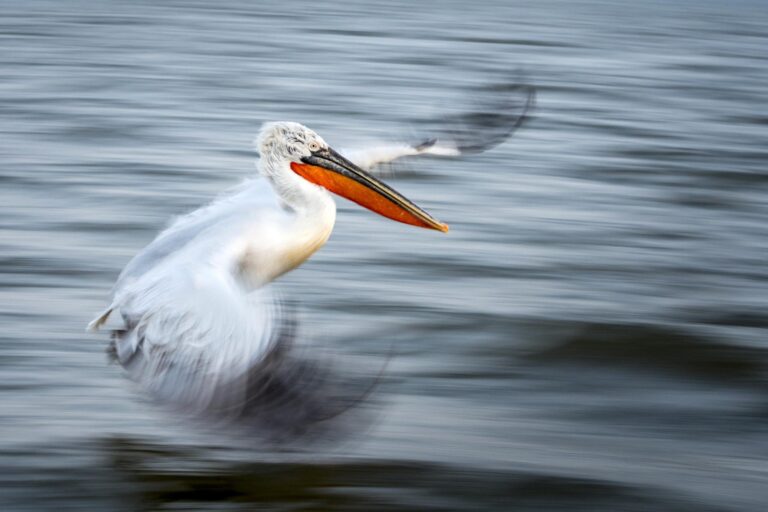In an innovative move to manage pest populations at its golf course, Southend-on-Sea Borough Council has announced plans to employ birds of prey as a natural solution for controlling vermin. This environmentally friendly initiative aims to reduce the reliance on chemical pesticides, fostering a healthier ecosystem while ensuring the course remains in pristine condition for players and wildlife alike. The strategy, inspired by successful practices in othre regions, signals a commitment to sustainable land management and highlights the council’s proactive approach to addressing pest-related challenges in the face of increasing environmental concerns. As this pilot program unfolds, stakeholders are keen to observe the impact of these majestic raptors on both pest control and the overall ecological balance of the area.
Southend Council Implements birds of Prey as Eco-Friendly Pest Management Strategy
In a forward-thinking move aimed at enhancing environmental sustainability, the local council has announced the introduction of birds of prey as a natural solution for pest management at the golf course. This innovative strategy comes in response to growing concerns over the use of chemicals and conventional pest control methods that could harm local wildlife and ecosystems. By harnessing the hunting instincts of these splendid birds, the council anticipates not only reducing pest populations but also promoting biodiversity within the area.
The initiative will involve the deployment of various species of raptors known for their efficiency in hunting smaller animals such as rodents and insects. The council plans to create an ecosystem-friendly habitat through the following measures:
- Species Selection: Choose birds that are native to the region and effective at controlling specific pest species.
- Public Awareness: Educate the community on the benefits of using birds of prey for pest control.
- Monitoring Program: Implement ongoing assessments to evaluate the effectiveness of this eco-friendly strategy.
By integrating wildlife into their pest management practices, the council hopes to set a precedent for sustainable practices across other public spaces. This initiative not only aims to tackle the immediate challenge of pest control but also promotes a deeper understanding and appreciation for nature’s role in maintaining ecological balance.
Beneficial Impact on Local Ecosystem and Golf Course Maintenance
The introduction of birds of prey for pest control at local golf courses represents a significant advancement in sustainable land management practices. This method not only effectively targets pest populations but also harmonizes with the natural ecosystem surrounding the golf course. By allowing raptors such as hawks and falcons to hunt, the council is fostering a balanced food chain while reducing the need for chemical pesticides, which can have harmful effects on both wildlife and the environment. The use of these majestic birds promotes biodiversity, helping to maintain a healthy habitat for various species.
Moreover, the presence of birds of prey can enhance the aesthetic appeal of the golf course, transforming it into a living landscape that attracts visitors.Their role as natural predators is complemented by the reduction of maintenance costs associated with traditional pest control methods. This innovative approach not only supports the local ecosystem but also underscores the commitment of the Southend council to prioritize environmentally friendly practices. The community can expect benefits such as:
- Reduction in chemical use: less reliance on pesticides protects flora and fauna.
- Natural pest control: Effective management of pest populations through predation.
- Biodiversity enhancement: Creation of a more balanced ecosystem.
- Aesthetic improvements: Increased visitor engagement and enjoyment of natural wildlife.
Expert recommendations for Sustainable Practices in Urban Wildlife management
As urban areas expand, managing wildlife populations in a sustainable manner is becoming increasingly crucial. The deployment of birds of prey,as demonstrated by the Southend Council’s recent initiative,highlights a shift towards more eco-friendly pest control methods. Experts in urban wildlife management recommend several best practices for integrating raptors into city landscapes:
- Habitat Enhancement: Create environments that support natural prey species, such as small mammals or birds, ensuring that the raptors have enough food sources to thrive without exacerbating local pest problems.
- Monitoring Programs: Implement regular assessments to gauge the effectiveness of the raptor intervention, including tracking prey population dynamics and public safety evaluations.
- Community Engagement: Involve local residents through educational campaigns that highlight the ecological benefits of using natural predators, fostering a sense of stewardship for urban wildlife.
Additionally,effective interaction among stakeholders is key to successful urban wildlife management. Hear’s a summary of potential benefits and considerations:
| Benefits | Considerations |
|---|---|
| Reduction in pest populations | Possible conflicts with pet ownership |
| Enhanced biodiversity | Habitat limitations in urban settings |
| Community education and engagement | Need for public awareness and acceptance |
Future Outlook
In a pioneering move aimed at sustainable pest control, Southend-on-Sea City Council is set to implement the use of trained birds of prey at local golf courses. This initiative not only seeks to manage the population of unwanted pests effectively but also serves as a testament to the council’s commitment to environmentally friendly practices. By leveraging the natural hunting instincts of these majestic birds, the council hopes to minimize chemical intervention and enhance the ecological balance within the golf course ecosystem. As this innovative strategy takes flight, it could pave the way for similar approaches in other localities, illustrating the potential of integrating nature into urban pest management solutions. The Southend community eagerly awaits the rollout of this initiative,which promises to unite conservation efforts with recreational enjoyment in a uniquely harmonious manner.


